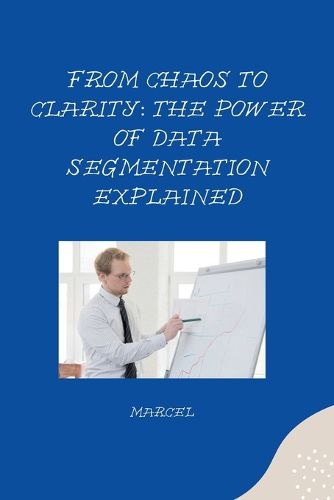Readings Newsletter
Become a Readings Member to make your shopping experience even easier.
Sign in or sign up for free!
You’re not far away from qualifying for FREE standard shipping within Australia
You’ve qualified for FREE standard shipping within Australia
The cart is loading…






Data segmentation is the process of segmenting target data according to selected parameters and grouping similar data together so that we can use it more effectively. Segmentation can be done by one- or multi-dimensional segmentation algorithms through simple means, or it can be carried out using sophisticated analytical tech-niques based on the complexity and dimension of the dataset. Give a data F: [1, n] -> R^k the segmentation problem consists in ?nding a partition of the interval [1, n] into subintervals [a_i, b_i] such that F is well approximated by a prescribed type of function on each interval [a_i, b_i]. Multidimensional segmentation is a powerful conceptual model for analyzing large and complex data sets. By subdividing the data set into closely related areas. Multiple and independent segmentations of the whole data set are possible. Genome segmentation methods are powerful tools for obtaining cell-type or tissue-speci?c genome-wide annotations and are often used to discover regulatory elements. The segmentation of multivariate time series and -omic data is a common problem in computational biology in general. Over the years, and with increasingly complex measurement procedures, a single data point is usually not just a number or a simple vector, where all components are of the same type. Due to the potential impact of next-generation sequencing NGS, we have seen a rapid increase not only in genomic information but also in annotation information that can be naturally mapped to genomic locations.
$9.00 standard shipping within Australia
FREE standard shipping within Australia for orders over $100.00
Express & International shipping calculated at checkout
Data segmentation is the process of segmenting target data according to selected parameters and grouping similar data together so that we can use it more effectively. Segmentation can be done by one- or multi-dimensional segmentation algorithms through simple means, or it can be carried out using sophisticated analytical tech-niques based on the complexity and dimension of the dataset. Give a data F: [1, n] -> R^k the segmentation problem consists in ?nding a partition of the interval [1, n] into subintervals [a_i, b_i] such that F is well approximated by a prescribed type of function on each interval [a_i, b_i]. Multidimensional segmentation is a powerful conceptual model for analyzing large and complex data sets. By subdividing the data set into closely related areas. Multiple and independent segmentations of the whole data set are possible. Genome segmentation methods are powerful tools for obtaining cell-type or tissue-speci?c genome-wide annotations and are often used to discover regulatory elements. The segmentation of multivariate time series and -omic data is a common problem in computational biology in general. Over the years, and with increasingly complex measurement procedures, a single data point is usually not just a number or a simple vector, where all components are of the same type. Due to the potential impact of next-generation sequencing NGS, we have seen a rapid increase not only in genomic information but also in annotation information that can be naturally mapped to genomic locations.